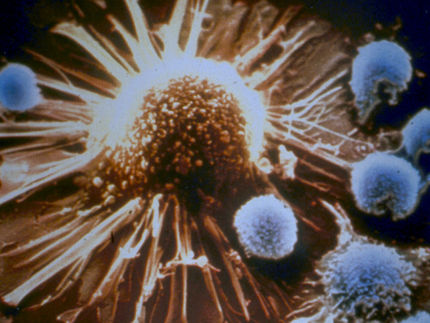The gut microbiome prevents dangerous immune reactions
Certain combinations of gut bacteria protect stem cell transplantation patients
After stem cell transplantation, the donated immune cells sometimes attack the patients' bodies. This is known as graft versus host disease or GvHD. Researchers at the Technical University of Munich (TUM) and the Universitätsklinikum Regensburg (UKR) have shown that GvHD is much less common when certain microbes are present in the gut. In the future, it may be possible to deliberately bring about this protective composition of the microbiome.
Stem cell transplantation can save the lives of patients suffering from cancers such as leukemia. However, graft versus host reactions occur following around half of these procedures. In a sense, they are the reverse of the rejection response seen after organ donations, in which the body attacks the donated organ. Here, the donated cells attack the patient’s body, for instance, in the digestive tract.
It has been known for some time that microbes in the gut play a role in determining whether GvHD occurs. A team working with Dr. Erik Thiele Orberg, who heads a research group at the Clinic and Polyclinic for Internal Medicine III of TUM’s Klinikum rechts der Isar, Ernst Holler, Senior Professor of Allogenic Stem Cell Transplantation at UKR, and Prof. Hendrik Poeck, executive senior physician at UKR’s Clinic and Polyclinic for Internal Medicine, describe in the journal Nature Cancer how the gut microbiome must be composed to provide protection.
78 patients observed
The researchers studied stool samples from 78 patients at the two university clinics and tracked them over two years following stem cell transplantation. They used the results to develop a risk index indicating the probability of a rejection reaction. “Instead of counting bacteria, we measured the quantities of certain metabolites produced by the microbes,” says Erik Thiele Orberg.
These immuno-modulatory microbial metabolites (IMMs) influence the immune system and the body’s regenerative capacity. “It is remarkable that a positive prognosis does not depend only on IMMs from bacteria,” says Dr. Elisabeth Meedt, a physician at UKR and co-first author of the article. “We demonstrated that certain viruses in the gut – the bacteriophages – also play a role. This alone offers an impressive insight into the complex world of our gut microbiome.”
Better prognosis with low microbiome scores
“Patients with a low IMM risk index had a higher chance of survival, showed fewer graft vs. host reactions, and experienced fewer relapses,” says Hendrik Poeck. The metabolites are formed mainly by bacteria from the families Lachnospiraceae and Oscillospiraceae in combination with the bacteriophages.
Actively improving the probability of recovery
In the next step, the researchers at TUM and UKR want to predict and actively improve patients' chances at a cure. “By precisely controlling the composition of fecal microbiota transplants, the gut could be colonized with specific consortia of bacteria and bacteriophages,” says Hendrik Poeck. “In the coming years, we want to find out whether we can use this approach to prevent graft vs. host reactions as well as relapses,” Initial experiments with mice have been successful. As a result, the procedure could now be tested in clinical trials with human patients.
Original publication
Other news from the department science

Get the life science industry in your inbox
By submitting this form you agree that LUMITOS AG will send you the newsletter(s) selected above by email. Your data will not be passed on to third parties. Your data will be stored and processed in accordance with our data protection regulations. LUMITOS may contact you by email for the purpose of advertising or market and opinion surveys. You can revoke your consent at any time without giving reasons to LUMITOS AG, Ernst-Augustin-Str. 2, 12489 Berlin, Germany or by e-mail at revoke@lumitos.com with effect for the future. In addition, each email contains a link to unsubscribe from the corresponding newsletter.






















































